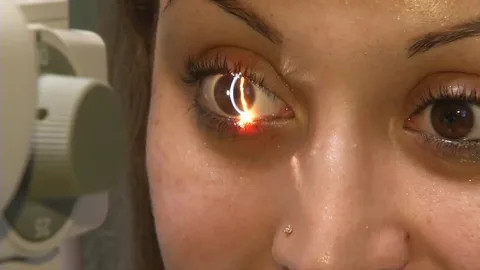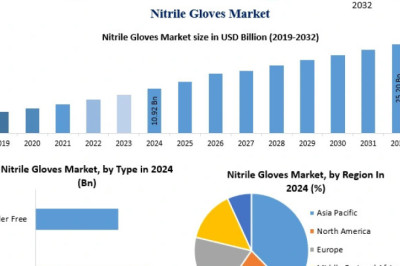views
Your Best Vision Guide: Look at the Best Surgery Options!
When it comes to achieving perfect vision, today’s medical advancements provide a variety of effective options. If you’re in Austin and considering laser eye surgery, it’s helpful to know what choices are available and which might be best for your needs. This guide will explore the main types of eye surgeries designed to improve your sight and free you from the constant need for glasses or contact lenses. Let's dive in and explore how each option can offer a path to clear, precise vision.
1. LASIK: A Popular Choice for Quick Results
What is LASIK?
LASIK (Laser-Assisted in Situ Keratomileusis) is one of the most widely known types of laser eye surgery. It reshapes the cornea to correct refractive errors like nearsightedness, farsightedness, and astigmatism, allowing light to focus directly on the retina for improved clarity.

Benefits of LASIK:
- Fast Recovery: Most patients experience significantly improved vision within 24 hours.
- Quick Procedure: Typically completed within 10-15 minutes per eye.
- Long-Lasting Results: Many enjoy sharp vision for years post-surgery.
Who is it for?
LASIK is ideal for those with stable vision prescriptions who are over 18 and have generally healthy eyes. People with dry eye symptoms, thin corneas, or certain health conditions may need to consider other options.
2. PRK: A Tried-and-True Alternative
What is PRK?
PRK (Photorefractive Keratectomy) is a predecessor to LASIK and also involves reshaping the cornea to correct refractive errors. However, instead of creating a corneal flap like in LASIK, PRK works on the cornea’s surface.
Benefits of PRK:
- No Flap Complications: PRK doesn’t involve a corneal flap, making it a safer choice for those with thinner corneas.
- Proven Results: PRK is highly effective for correcting mild to moderate nearsightedness, farsightedness, and astigmatism.
- Durable Correction: Results can be as permanent and effective as LASIK, particularly with proper care.
Who is it for?
PRK is a great option for people who may not qualify for LASIK due to thin corneas or specific lifestyle choices, such as athletes or individuals in physically demanding fields who want to avoid potential flap-related complications.
3. SMILE: The Newest in Vision Correction
What is SMILE?
SMILE (Small Incision Lenticule Extraction) is one of the latest options in laser eye surgery, designed for treating myopia and astigmatism. This minimally invasive procedure uses a femtosecond laser to create a small, lens-shaped piece of corneal tissue, which is then removed through a tiny incision, reshaping the cornea.

Benefits of SMILE:
- Minimally Invasive: SMILE requires only a small incision, which reduces the risk of dry eye syndrome.
- Quick and Comfortable Recovery: Many patients find recovery to be smooth with minimal discomfort.
- Improved Stability: The corneal surface stays largely intact, providing extra stability and strength post-surgery.
Who is it for?
SMILE is a solid choice for people with nearsightedness or astigmatism looking for a minimally invasive option. This procedure is especially popular among those who are prone to dry eyes or want a quicker recovery time than traditional methods.
4. EVO ICL: A Reversible Lens Implant
What is EVO ICL?
The EVO Implantable Collamer Lens (ICL) is a vision correction option for those who aren’t ideal candidates for laser procedures. Unlike reshaping the cornea, this procedure involves implanting a biocompatible lens within the eye to correct vision. The lens is removable, making this a flexible, non-permanent option.
Benefits of EVO ICL:
- Reversible Option: The lens can be removed or adjusted as needed, making it ideal for those looking for a non-permanent solution.
- Enhanced Night Vision: Many report clearer vision in low-light settings compared to other surgeries.
- No Corneal Reshaping: Since the cornea remains untouched, the procedure suits those with thin corneas or dry eyes.
Who is it for?
EVO ICL works well for people with severe myopia who aren’t suitable for LASIK or PRK. This option is also great for individuals who want flexibility in case of future changes to their vision prescription.
Choosing the Right Vision Correction Surgery
When it comes to choosing the best laser eye surgery in Austin, several factors come into play, such as the specific refractive error, corneal thickness, age, and lifestyle. Consulting with an experienced ophthalmologist is crucial, as they can assess these factors and guide you to the most suitable procedure.
For instance, LASIK may be best for those seeking quick recovery and long-term results, while PRK suits individuals with thinner corneas. SMILE offers a minimally invasive solution with reduced dry eye risk, and EVO ICL provides flexibility and reversibility.
Conclusion
Deciding on the best vision correction surgery can feel overwhelming, but understanding the options can make the process easier. From the popular LASIK and PRK to the innovative SMILE and EVO ICL, each procedure offers distinct benefits to meet diverse needs. Consult with a trusted specialist in Austin to determine the best option for you, and take a step toward a life of clear, lens-free vision. With the right choice, you can say goodbye to glasses and enjoy the freedom of enhanced sight every day.











